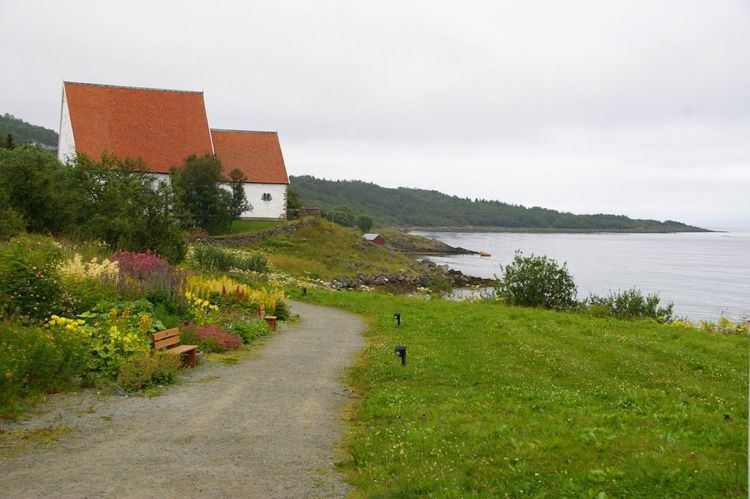District Hålogaland Adm. Center Trondenes | Municipality ID NO-1914 Area 186 km² | |
 | ||
Created as Formannskapsdistrikt in 1838 Weather 4°C, Wind SW at 21 km/h, 81% Humidity | ||
Trondenes is a parish and a former municipality in Troms county in Norway. It is located along the Vågsfjorden in the present-day municipality of Harstad. Trondenes included the majority of the island of Grytøya and part of the island of Hinnøya as well as some smaller islands. Located just north of the town of Harstad, Trondenes Church is the northernmost medieval stone church in Norway. The Trondenes Historical Center was built in 1997 near the church to teach about the history of the area. Trondenes Fort is also located on the Trondenes peninsula.
Contents
History
The parish of Trondenes was established as a municipality on 1 January 1838 (see formannskapsdistrikt). The town of Harstad was separated from Trondenes on 1 January 1904 to become a separate municipality. This left Trondenes with 7,775 inhabitants. On 1 January 1912, part of Trondenes (population: 291) was transferred to the neighboring municipality of Evenes (in Nordland county). The districts of Sandtorg and Skånland were separated from Trondenes on 1 July 1926 to become independent municipalities, leaving 3,429 inhabitants in the remaining areas of Trondenes. On 25 October 1956, a small border adjustment was made between Trondenes and Kvæfjord. This resulted in 32 inhabitants becoming residents of Trondenes. On 1 January 1964, the municipalities of Trondenes and Sandtorg were merged with the town of Harstad to form a new, larger municipality of Harstad. Prior to the merger, Trondenes had a population of 6,567.
Name
The municipality (originally the parish) was named after the old Trondenes farm (Old Norse: Þróndarnes), since the first church (Trondenes Church) was built there. The first element is the genitive of þróndr which means "hog" and the last element is nes which means "headland". The shape of the headland was probably compared with the snout of a hog.
